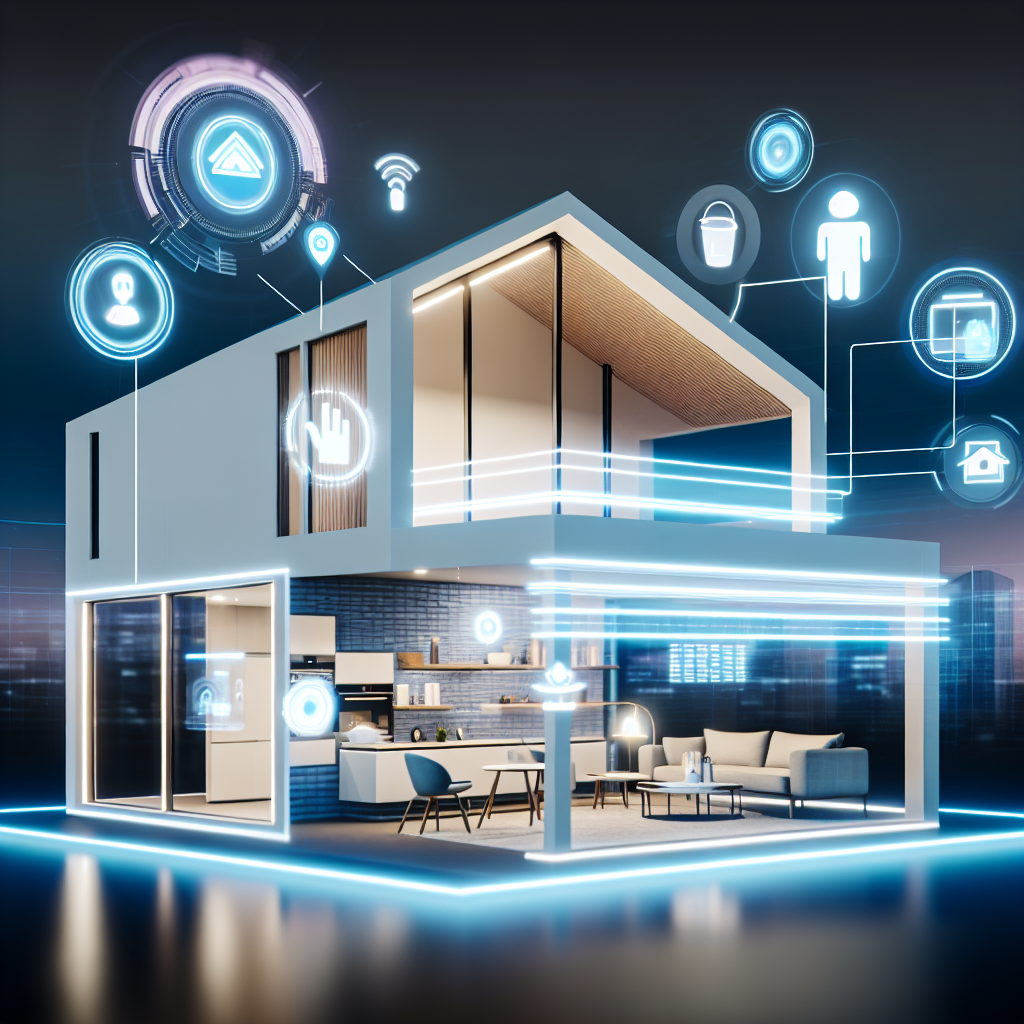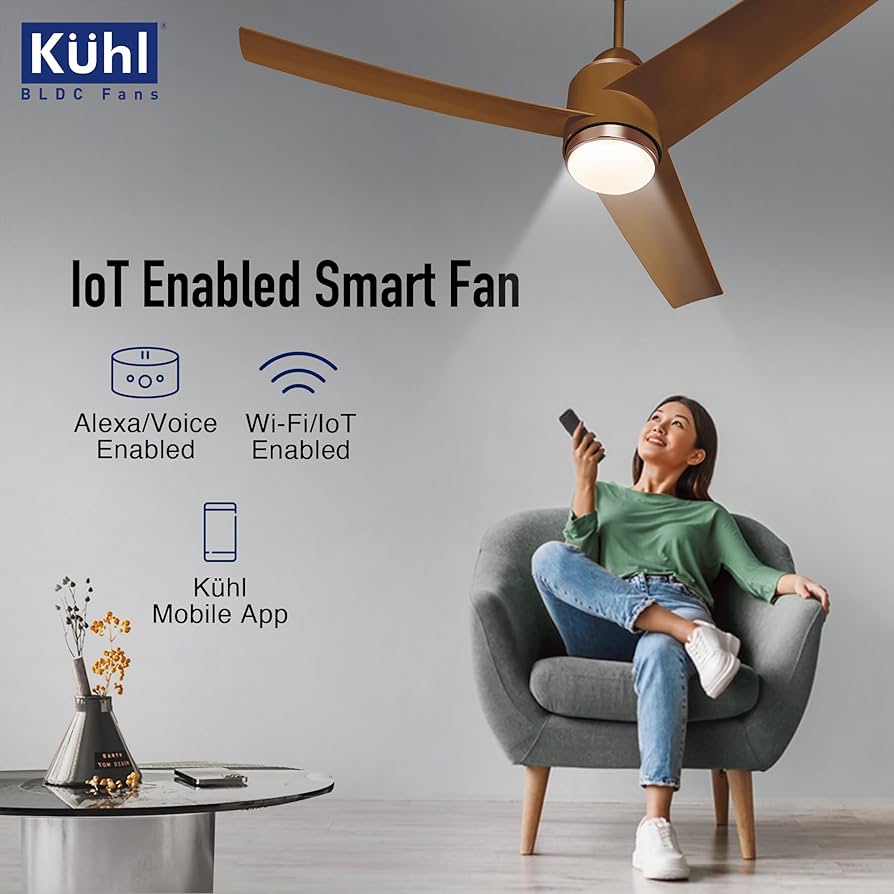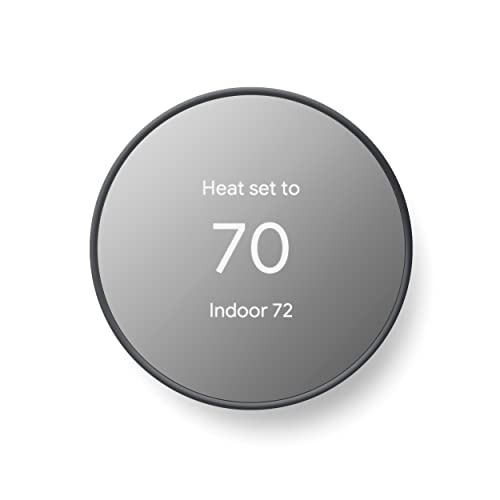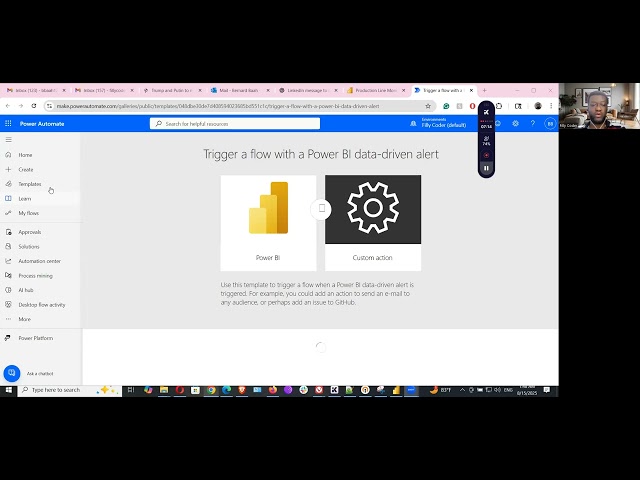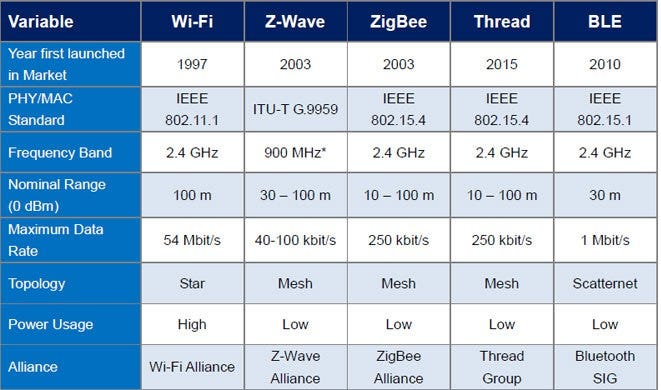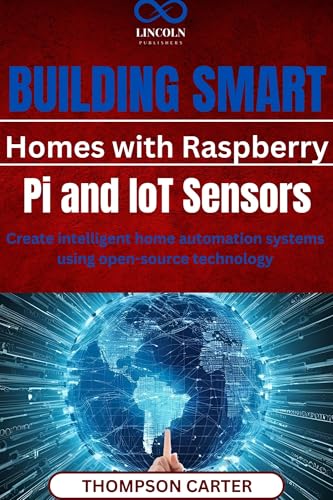Imagine your home not only making life easier but also helping the planet. What if you could control your lights, temperature, and appliances while cutting down energy waste and saving money?
Sustainable home automation ideas can turn this vision into reality. By choosing smart, eco-friendly solutions, you take charge of your comfort and your carbon footprint. Ready to discover simple changes that make a big difference? Keep reading to find out how your home can be smarter, greener, and more efficient—all at the same time.
Energy-efficient Lighting
Energy-efficient lighting helps reduce electricity use and saves money. It also lowers your home’s carbon footprint.
Using smart and natural lighting options can make your home greener and more comfortable.
Led And Smart Bulbs
LED bulbs use less power than traditional bulbs and last longer. They come in many colors and brightness levels.
Smart bulbs can be controlled with apps or voice assistants. You can change light settings without wasting energy.
- LED bulbs save up to 80% energy
- Smart bulbs allow scheduling and dimming
- Both reduce heat output compared to old bulbs
Automated Lighting Controls
Automated controls turn lights on or off based on movement or time. This stops lights from being left on by mistake.
Timers and motion sensors save energy and add convenience to your home lighting system.
- Motion sensors detect room occupancy
- Timers set lights to turn off automatically
- Smart systems adjust lighting based on routines
Natural Light Optimization
Using natural light reduces the need for artificial lighting during the day. It brightens rooms and saves energy.
Design your home to have large windows and use light colors on walls to reflect daylight inside.
- Place windows to capture sunlight
- Use skylights for extra daylight
- Keep window areas clear of heavy curtains
Smart Thermostats
Smart thermostats help save energy at home. They adjust heating and cooling automatically.
These devices make homes more comfortable and reduce utility bills. They use sensors and data to work well.
Adaptive Temperature Settings
Smart thermostats learn your daily schedule. They change the temperature to fit your routine.
This means less energy is used when no one is home. The system keeps your home cozy when you return.
Remote Climate Control
You can control your thermostat from anywhere using a smartphone. This lets you adjust the temperature on the go.
Remote control helps avoid wasting energy. You can cool or heat your home only when needed.
Energy Usage Monitoring
Smart thermostats track how much energy you use. They show easy-to-understand reports on your phone or device.
- See daily and monthly energy use
- Identify times when energy use is high
- Make better choices to save energy
Water Conservation Systems
Water conservation systems help save water and reduce waste in homes. They use smart technology to control and monitor water use.
These systems make homes more eco-friendly and lower water bills. They protect water resources for the future.
Smart Irrigation Controllers
Smart irrigation controllers adjust watering based on weather and soil conditions. They prevent overwatering and keep plants healthy.
These controllers use data from sensors and forecasts to water only when needed. This saves water and energy.
- Schedule watering times automatically
- Adjust watering after rain
- Monitor soil moisture levels
- Reduce water waste in gardens
Leak Detection Sensors
Leak detection sensors find water leaks early in pipes and appliances. They alert homeowners to fix leaks fast.
These sensors prevent water damage and save large amounts of water. They are easy to install and use.
- Detect leaks in real time
- Send alerts to phones or systems
- Reduce water loss and damage
- Help maintain plumbing health
Automated Water Usage Alerts
Automated water usage alerts inform users about high or unusual water use. They help people act quickly to save water.
These alerts come from smart meters or sensors. They track daily water use and spot leaks or waste.
- Monitor water use continuously
- Send alerts for unusual patterns
- Encourage water-saving habits
- Help lower water bills

Credit: smartlifestyleaustralia.com.au
Renewable Energy Integration
Sustainable home automation uses renewable energy to save power. It helps reduce bills and protect nature.
Smart systems control energy use and connect with green sources like solar panels and batteries.
Solar Panel Automation
Solar panel automation manages how panels collect sunlight. It adjusts panel positions for more energy.
Automation systems check weather and sunlight to make panels work best all day long.
- Track the sun’s movement to increase power
- Clean panels automatically when dirty
- Turn off panels during storms for safety
Energy Storage Solutions
Energy storage keeps extra power for use when the sun is not shining. Batteries are common solutions.
Smart storage systems decide when to save or use energy to lower costs and waste.
- Store energy during sunny hours
- Use stored power at night or cloudy days
- Monitor battery health and charge levels
Grid-tied Smart Systems
Grid-tied systems connect home energy to the main power grid. They share extra power with neighbors.
Smart controls balance energy use between the home and the grid to keep power stable and save money.
- Send extra solar power to the grid
- Use grid power when solar is low
- Track energy flow for better savings
Waste Reduction Techniques
Reducing waste is important for a cleaner environment. Smart home technology helps lower trash and reuse materials.
Using automation in homes can save resources and cut down on unnecessary waste every day.
Smart Recycling Bins
Smart recycling bins sort waste automatically. They recognize materials like plastic, glass, and paper.
These bins reduce mistakes and keep recyclables clean. They also remind users when bins are full.
- Use sensors to detect waste type
- Send alerts when bins need emptying
- Improve recycling accuracy
Composting Automation
Composting automation turns food scraps into useful soil. It controls temperature and moisture for fast decay.
Smart composters send notifications when compost is ready or needs attention. They help reduce kitchen waste.
- Maintain ideal compost conditions
- Reduce food waste in landfills
- Provide nutrient-rich soil for plants
Inventory Management For Groceries
Inventory systems track grocery items at home. They notify you before food expires to prevent waste.
These tools help plan meals and shopping lists. They stop buying too much or forgetting what you have.
- Scan barcodes for easy tracking
- Set alerts for expiration dates
- Organize shopping to avoid overbuying

Credit: www.self-build.co.uk
Eco-friendly Appliance Choices
Choosing eco-friendly appliances helps save energy and reduce waste. These appliances use less power and last longer.
Smart home automation can improve how these appliances work. It makes homes greener and cuts down on utility bills.
Energy Star Rated Devices
Energy Star rated devices meet strict energy-saving rules. They use less electricity than regular models.
These devices lower your energy use and help protect the planet. They are good for your home and budget.
- Use less power for the same tasks
- Reduce greenhouse gas emissions
- Often qualify for rebates or tax credits
Smart Usage Scheduling
Smart scheduling lets you control when appliances run. This avoids wasting energy when not needed.
Set your dishwasher or washing machine to run at night. Use timers to turn off devices during the day.
- Reduce peak energy use
- Save money on electricity bills
- Keep appliances running only when needed
Remote Power Management
Remote power management lets you turn appliances on or off from anywhere. Use apps on your phone or tablet.
This helps avoid leaving devices on by mistake. It also allows quick responses to changing needs.
- Control energy use remotely
- Reduce standby power waste
- Improve convenience and energy savings
Indoor Air Quality Management
Indoor air quality is important for a healthy home. Good air helps you breathe better and stay well.
Sustainable home automation can improve air quality. Smart devices monitor and adjust air inside your house.
Smart Air Purifiers
Smart air purifiers clean the air by removing dust, pollen, and smoke. They use sensors to check air quality.
The purifier turns on automatically when air quality drops. It adjusts speed for energy saving.
- Detects harmful particles in the air
- Automatically adjusts purification levels
- Can be controlled by smartphone apps
- Uses less energy with smart schedules
Humidity Control Systems
Humidity control systems keep air moisture at the right level. Too much or too little humidity can cause health issues.
These systems use sensors to measure humidity and adjust humidifiers or dehumidifiers automatically.
- Maintains comfortable and healthy humidity
- Prevents mold and dust mites
- Works with HVAC systems for efficiency
- Helps protect wood and furniture
Ventilation Automation
Ventilation automation brings fresh air inside and removes stale air. It reduces indoor pollutants and odors.
Automated systems open vents or windows based on air quality and temperature. This saves energy and keeps air fresh.
- Monitors carbon dioxide and pollutants
- Automatically controls fans and vents
- Improves airflow without wasting energy
- Works with smart home systems for convenience
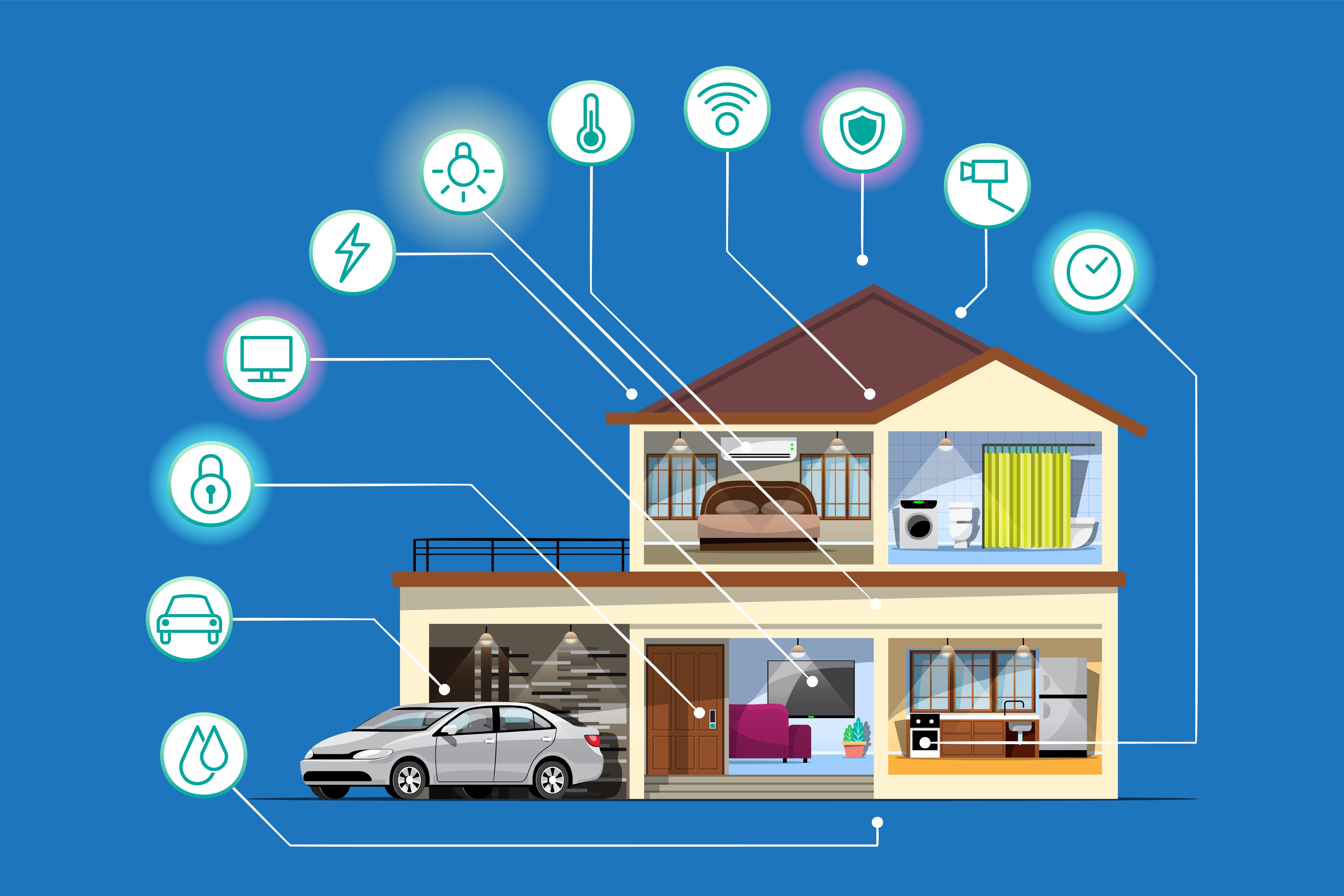
Credit: medium.com
Sustainable Home Security
Keeping your home safe can also help protect the environment. Sustainable home security uses smart ideas to save energy and reduce waste. These ideas keep your home secure without harming the planet.
Using energy-saving devices and renewable power sources helps lower electricity use. This makes your home safer and greener at the same time.
Solar-powered Cameras
Solar-powered cameras use sunlight to work. They do not need wires or batteries that run out fast. This saves energy and lowers your electricity bill.
These cameras can stay outside and keep watching your home all day long. They help you save money and reduce pollution from power use.
- Use solar panels to capture sunlight
- Store energy in rechargeable batteries
- Work without needing extra power cables
Motion-activated Lighting
Lights that turn on only when they sense movement save a lot of energy. They do not stay on all night. This reduces power waste and helps the planet.
Motion-activated lights also make your home safer. They surprise visitors and warn you about people nearby. This type of lighting is easy to install and use.
- Save electricity by lighting only when needed
- Increase security with sudden lighting
- Use LED bulbs for extra energy savings
Energy-efficient Alarm Systems
Modern alarm systems use less energy than older ones. They often run on low-power electronics and smart sensors. This helps save electricity all year.
Many energy-efficient alarms connect to your phone. You get alerts without keeping screens or lights on all the time. This makes your home security smarter and greener.
- Use low-power sensors and devices
- Connect alarms to mobile apps
- Choose systems with standby energy saving
Smart Home Energy Monitoring
Smart home energy monitoring helps track how much electricity your home uses. It shows real-time data to help you save energy.
With this system, you can see which devices use the most power. It helps make your home more sustainable and lowers bills.
Real-time Energy Tracking
Real-time energy tracking shows current electricity use in your home. It updates instantly so you know what is running.
This helps spot energy waste quickly. You can turn off devices that use too much power right away.
- Monitor lights, appliances, and heating systems
- See energy use on your phone or tablet
- Detect unusual spikes in electricity use
Usage Pattern Analysis
Usage pattern analysis studies when and how you use energy. It finds trends over days or weeks.
This data helps understand which times use the most electricity. You can plan to use devices at lower-demand times.
- Track daily and weekly energy habits
- Identify high-usage periods
- Adjust routines to save energy
Personalized Energy Saving Tips
Smart monitors give tips based on your home’s energy use. These tips help you cut down waste and save money.
Tips may include turning off devices, changing settings, or using appliances at better times.
- Reduce standby power by unplugging devices
- Use energy-efficient settings on appliances
- Shift energy use to off-peak hours
Integrating Smart Home Ecosystems
Smart home systems help save energy and make life easier. They connect many devices to work as one.
Using a smart home ecosystem helps control lights, temperature, and security in one place.
Centralized Control Hubs
Centralized control hubs let you manage all smart devices from one screen. This reduces energy waste.
Hubs connect lights, thermostats, and security cameras to one system. They make your home smarter and greener.
- Control devices with one app or panel
- Monitor energy use easily
- Set schedules for lighting and heating
Voice-activated Commands
Voice commands let you control devices without touching anything. This saves time and power.
You can turn off lights or adjust temperature by speaking. This helps reduce unnecessary energy use.
- Use simple phrases to control devices
- Works well for hands-free operation
- Great for quick energy-saving actions
Cross-device Automation
Cross-device automation links devices to work together automatically. It improves home efficiency.
For example, lights can turn off when you leave, and the thermostat can adjust to save energy.
- Set rules for devices to act together
- Save energy by automating routines
- Improve comfort with smart timing
Frequently Asked Questions
What Are Sustainable Home Automation Benefits?
Sustainable home automation reduces energy waste and lowers utility bills. It enhances comfort while minimizing environmental impact. Smart devices optimize resource use, promoting eco-friendly living. This technology supports renewable energy integration and efficient water management. Overall, it fosters a greener, cost-effective lifestyle.
How Can Smart Thermostats Save Energy?
Smart thermostats learn your schedule and adjust temperatures automatically. They reduce heating and cooling when you’re away, saving energy. These devices provide real-time usage data to optimize settings. By maintaining efficient temperatures, they lower utility costs and carbon footprint significantly.
Which Smart Devices Improve Home Sustainability?
Energy-efficient lighting, smart plugs, and automated blinds enhance sustainability. Smart irrigation systems conserve water by adjusting to weather conditions. Solar panel monitors optimize renewable energy use. Together, these devices reduce waste and promote eco-friendly home management.
Is Sustainable Home Automation Expensive To Install?
Initial costs vary but are decreasing due to technology advances. Long-term energy savings often offset upfront expenses. Many devices offer easy DIY installation, reducing labor costs. Incentives and rebates can further lower investment. Sustainable automation is increasingly affordable and valuable.
Conclusion
Exploring sustainable home automation can transform your living environment. Small changes make a big difference. Use energy-efficient devices to save resources. Smart thermostats and LED lights reduce energy use. Solar panels offer clean, renewable energy. Automated systems improve your home’s efficiency and comfort.
You not only help the planet but also cut costs. Start with one or two upgrades. Gradually expand as you become more familiar. Sustainable choices benefit you and future generations. It’s a path worth taking. Embrace these ideas and enjoy a smarter, greener home.
23 min read

